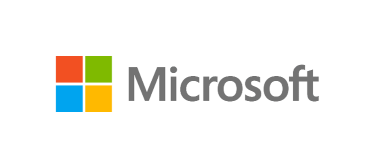Jane Cheryeth Tom – Leadership | Operations | Project Management| Artificial Intelligence | Data Analytics & Engineering | Business Intelligence
Neuroscience reveals that well-designed processes unlock human potential, fostering an environment where our brains and businesses thrive.
Friederike Fabritius, in The Brain-Friendly Workplace, highlights the crucial role of neuroscience in shaping optimal work environments. At Advanced Data & AI Company (ADAICO), where data engineering, business intelligence, and AI solutions are our expertise, these principles guide how we refine processes for our team of consultants.
The Power of Predictability
The brain craves predictability. Neuroscience shows that clear structures reduce cognitive overload, allowing employees to focus on creative problem-solving rather than uncertainty. Well-defined workflows eliminate ambiguity, freeing up mental resources for high-value tasks.
We apply this by structuring data projects with clearly defined roles, responsibilities, and timelines. From initial requirement gathering to final deployment, our streamlined workflows ensure efficient, innovative solutions with minimal friction.
Processes as Stress Regulators
Chronic stress hampers productivity and creativity. Fabritius emphasises that the brain performs best in environments with moderate stress enough to motivate, but not overwhelm. Well-designed processes act as stress regulators, establishing clear boundaries and fostering a sense of control.
For example, our service delivery team follows a standardised approach with a clearly defined scope of work, step-by-step processes, and checklists. This eliminates last-minute surprises, allowing our consultants to focus on delivering strategic architecture instead of reacting to ad hoc demands.
Balancing Structure with Autonomy
While structure is essential, so is autonomy. Neuroscience shows that individuals thrive when they have control over their work environment. Fabritius suggests incorporating flexibility within frameworks to empower employees to work in ways that suit their strengths.
At ADAICO, we strike this balance by combining structured processes with opportunities for individual input. This autonomy fosters engagement, motivation, and innovation which are the key drivers of success in Data and AI projects.
Enhancing Collaboration Through Clarity
Collaboration is the backbone of successful workplaces, but without clear processes, teamwork can devolve into chaos. Neuroscience highlights that role clarity enhances trust and cohesion, allowing teams to function at their best.
In our projects, seamless collaboration between consultants, and stakeholders is vital. By defining communication protocols and leveraging tools like Microsoft Teams, we ensure alignment, foster a shared purpose, and minimise misunderstandings.
Processes as Catalysts for Innovation
Some fear that rigid structures stifle creativity, but neuroscience proves otherwise. Streamlined processes reduce decision fatigue, freeing cognitive resources for deep work and innovation. Fabritius underscores that when the brain isn’t bogged down by mundane choices, it can explore bold ideas.
At Advanced Data & AI Company , we see this in action when consultants use established frameworks for Data and AI projects. These frameworks handle routine tasks efficiently, allowing the team to focus on extracting insights and crafting transformative AI solutions.
The Takeaway
Processes are more than operational necessities. They are the foundation of a brain-friendly workplace. By integrating neuroscience principles into our workflows, we ensure our team is not just productive but also engaged and fulfilled.
In a world driven by data and AI, the human brain remains our most valuable asset. Investing in processes that align with how our brains function isn’t just beneficial for our team, it’s one of the smartest business decisions we can make.
How do you refine your workplace processes to foster both innovation and well-being?




